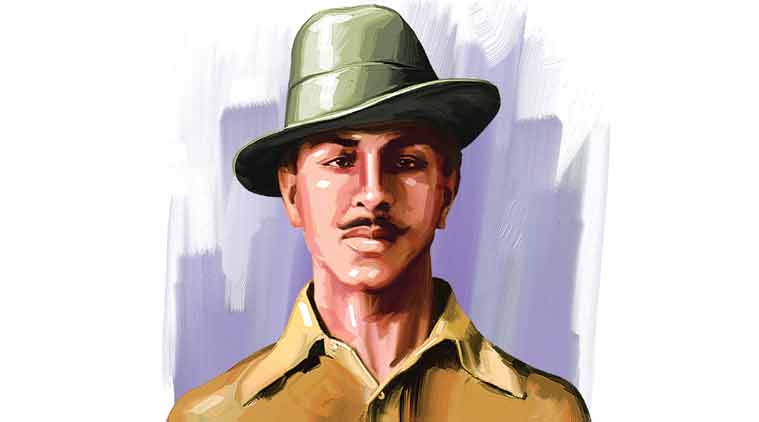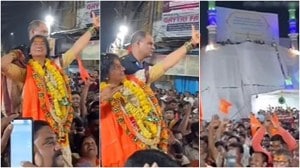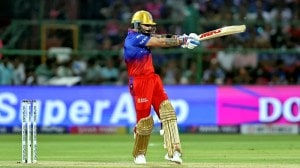- India
- International
What the ‘revolutionary terrorism’ of Bhagat Singh really means
There has been uproar in Parliament over the alleged reference to Bhagat Singh as a ‘terrorist’ in a well known book, the sale and distribution of whose Hindi version has been stopped by Delhi University.
 Bhagat Singh
Bhagat SinghWhat is the book at the centre of the controversy over the allegedly derogatory reference to Bhagat Singh?
India’s Struggle for Independence, published in 1988 and authored by Bipan Chandra, the celebrated historian who passed away in 2014, along with Mridula Mukherjee, Aditya Mukherjee, K N Panikkar and Sucheta Mahajan, all of whom are recognised for their scholarship on various aspects of the history of Modern India. Chandra wrote the Introduction and 22 of the book’s 39 chapters. The major reference to Bhagat Singh is in Chapter 20, ‘Bhagat Singh, Surya Sen and the Revolutionary Terrorists’, written by Chandra. The book has been prescribed in universities across India for over 25 years, and is widely acknowledged to be one of the finest textbooks on the history of the Indian National Movement.
Does the book really refer to Bhagat Singh as a “terrorist”?
Not in the way ‘terrorist’ is used and understood today. The book refers to “revolutionary terrorism” (‘Krantikari Aatankwaad’ in the Hindi translation) as a strand of the National Movement, and its practitioners — the fearless freedom fighters who took the path of individual heroism in the struggle against the British — as “revolutionary terrorists”. In the book, ‘terrorism’ and ‘terrorist’ are invariably used in the context of — and almost always together with — ‘revolution’ and ‘revolutionary’, and never in a critical or disparaging way. Several other authors in India and abroad too have used the two terms to describe a radical political philosophy and its adherents.
[related-post]
So, who were the ‘revolutionary terrorists’ in the National Movement?

They wanted radical change, disagreed with the pacifism of the Congress and Gandhi’s philosophy of ahimsa, believed in the use of guns and bombs to terrorise the British, and thought nothing of sacrificing their lives for the motherland. From 1908 on, patriots like Prafulla Chaki, Khudiram Bose, Madan Lal Dhingra, Sachin Sanyal and Rashbehari Bose carried out spectacular bomb and gun attacks on British officials. The government cracked down brutally, convicting or executing 186 revolutionaries between 1908 and 1918, Chandra’s book records.
The second phase of revolutionary terrorism was provoked by Gandhi’s unilaterally suspension of the Non-Cooperation Movement in 1922, following which many youths began to question the strategy of non-violence. This new generation of revolutionaries was influenced by the Bolsheviks’ success in Russia. Among them was Bhagat Singh, an intellectual giant, philosopher and revolutionary.
In 1925, Ramprasad Bismil, Ashfaqullah Khan, Chandrashekhar Azad and others robbed a cash train at Kakori to buy arms. In 1928, Bhagat Singh, Azad and Rajguru killed Saunders, the policeman who had ordered the lathicharge that had killed Lala Lajpat Rai a couple of months earlier. In 1929, Bhagat Singh and Batukeshwar Dutt threw bombs and leaflets in the central legislative assembly “to make the deaf hear”. In 1930, Surya Sen and his associates tried to raid the police armoury at Chittagong in Bengal.
Almost all these revolutionaries were hanged. They went to the gallows raising slogans of Inquilab Zindabad. Chandra’s book records: “Bhagat Singh became a household name in the land. …Many persons, all over the country, wept and refused to eat food, attend schools, or carry on their daily work when they heard of his hanging in March 1931”.
But did these revolutionaries see themselves as ‘terrorists’?
Revolutionary terrorism had been discussed by radical philosophers since the time of the French Revolution, and the use of terror to overthrow tyrannical regimes was widely debated and written about. The Indian revolutionaries grappled with the question of choosing the most effective way to fight the British in the face of opposition from the dominant political philosophy of Gandhi’s ahimsa — and before he was hanged, Bismil, one of the gurus of Bhagat Singh’s generation, advised the youth to give up “the desire to keep revolvers and pistols” and to instead join “the open movement”. Bhagat Singh’s own views evolved over time, and he had, by 1929, come to the conclusion that Marxism and broad-based mass movements were the right road to revolution, not individual heroic action. In 1931, addressing comrades from jail, he presented his nuanced understanding of terrorism as a strategy for action:
“The way of the bomb had its advantages in the beginning, but that is not enough. All over the world, it has failed, and the seeds of its defeat lie within. Imperialists know that to rule over 30 crore people, they can easily get rid of 30 people a year… We are not breaking our ties with terrorism entirely. We want to evaluate it fully from the point of view of a workers’ revolution… In a revolutionary party, the firing line must be integrated fully with the base. There should be no hesitation in collecting funds and weapons for the organisation.” (Translated from the Hindi, Bhagat Singh ke Sampoorn Dastavez, ed Chaman Lal)
The 1929 manifesto of the Hindustan Socialist Republican Association, the revolutionary organisation to which Bhagat Singh belonged, said, “We have been taken to task for our terroristic policy. No doubt, the revolutionaries think, and rightly, that it is only by resorting to terrorism that they can find a most effective means of retaliation…” The revolutionary Bhagwati Charan Vohra countered Gandhi’s criticism of the ‘Cult of the Bomb’ with the ‘Philosophy of the Bomb’: “(Terrorism) is a necessary and inevitable phase of the revolution. Terrorism is not the complete revolution, and the revolution is not complete without terrorism.”
Still, given the current context, could the use of ‘terrorist’ for some of India’s most loved national heroes been avoided?
Bipan Chandra was aware of these sensibilities himself. On Page 142, with the first reference to “revolutionary terrorism”, he clarified that it was “a term we use without any pejorative meaning and for want of a different term”. Chandra’s co-authors have said that Chandra had stopped using the expression in his later writings and, in his introduction to Bhagat Singh’s Why I am An Atheist in 2006, referred to Bhagat Singh as “one of India’s greatest freedom fighters and revolutionary socialists”. In 2007, The Times of India, while reporting that I&B Minister Priyaranjan Dasmunsi had said that calling Bhagat Singh a “revolutionary terrorist” was “utter nonsense” and “totally unacceptable”, added that Chandra himself “has favoured the deletion of the term”. Prof Chaman Lal, perhaps the greatest scholar of Bhagat Singh, has pointed out that it is ironical that Chandra should be targeted for allegedly insulting Bhagat Singh, given that it was Chandra’s work that brought into focus Bhagat Singh’s unique personality and contribution to the freedom struggle. It was also Chandra, Lal has said, who, as chairman of the National Book Trust, got Bhagat Singh’s writings published in numerous languages, which no other government agency had done before his time.
So why has this issue created such a row?
At one level, it is the failure to appreciate the many layers and complexities of India’s history and historical personalities. At another level, political considerations could be at play: Chandra’s co-authors have pointed out that “this attack coincides with the sustained attack against progressive institutions like JNU (where Chandra taught for long)”. The noise is probably also a part of the race to claim the legacy of Bhagat Singh by all parties, similar to the rush to claim Ambedkar — even though the ideologies of these parties may be different from those espoused by those great men.
WATCH INDIAN EXPRESS VIDEOS HERE
More Explained
EXPRESS OPINION
Apr 18: Latest News
- 01
- 02
- 03
- 04
- 05








































